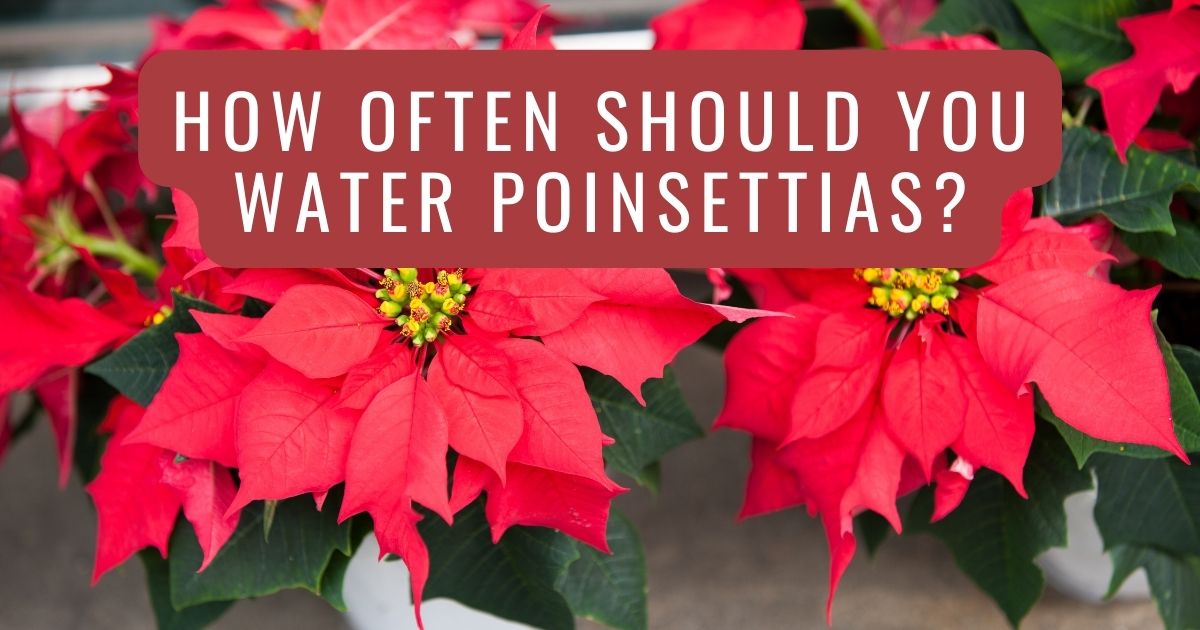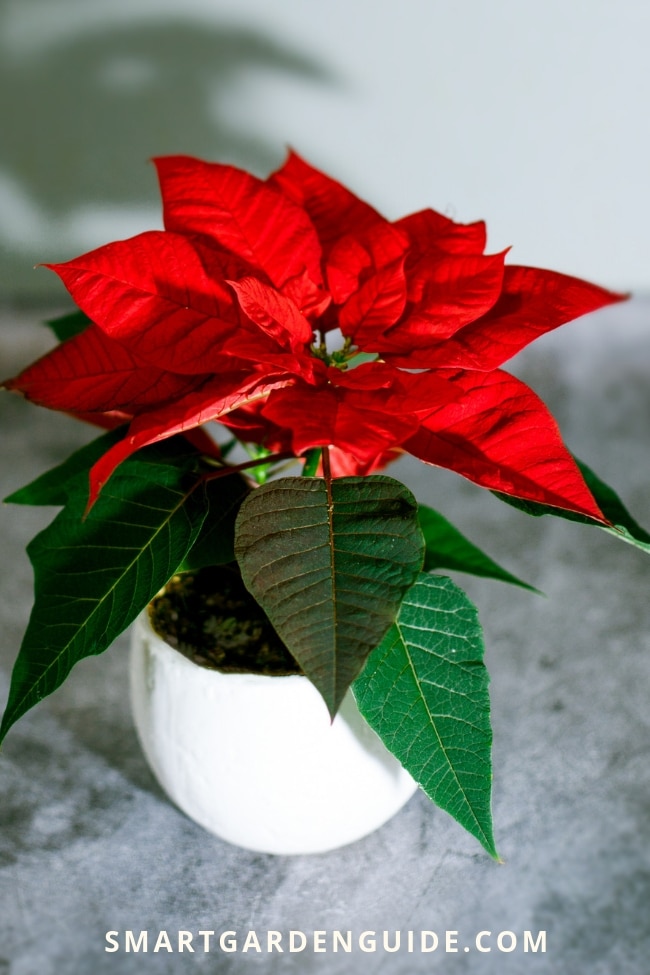Choosing the Perfect Poinsettia: What to Look for
Selecting a healthy poinsettia plant is crucial for its survival and blooming success. When shopping for a poinsettia, inspect the leaves, stems, and soil to ensure you’re bringing home a thriving plant. Healthy leaves should be a deep green color, with no signs of yellowing, drooping, or curling. Stems should be sturdy and strong, with no signs of weakness or damage. The soil should be moist but not waterlogged, as this can be a sign of root rot. Additionally, check for any signs of disease or pests, such as whiteflies, mealybugs, or spider mites. By choosing a healthy poinsettia plant, you’ll be well on your way to learning how to take care of poinsettia plants and enjoying their beautiful blooms all season long. Remember, a healthy plant is more likely to thrive and require less maintenance, making it easier to learn how to take care of poinsettia plants.
How to Water Your Poinsettia: Avoiding Overwatering and Underwatering
Watering is a crucial aspect of how to take care of poinsettia plants, as it directly affects their health and blooming success. To avoid common mistakes that can lead to root rot, it’s essential to understand the ideal watering schedule for poinsettia plants. Check the soil moisture by sticking your finger into the soil up to the first knuckle. If the soil feels dry, it’s time to water. If it’s already moist, wait another day before watering again. Water your poinsettia plant thoroughly, making sure the pot drains well to prevent waterlogged soil. Avoid getting water on the leaves or crown of the plant, as this can cause fungal diseases. By watering correctly, you’ll be able to enjoy your poinsettia’s beautiful blooms throughout the holiday season and learn how to take care of poinsettia plants with confidence.
Optimal Lighting Conditions for Your Poinsettia
Lighting plays a crucial role in how to take care of poinsettia plants, as it directly affects their growth and blooming success. Poinsettia plants require bright, indirect light to thrive. Placing your poinsettia near a sunny window or under grow lights can provide the necessary light for optimal growth. However, it’s essential to avoid direct sunlight, which can cause leaf scorch and discoloration. East- or west-facing windows are ideal for poinsettia plants, as they provide gentle, indirect light. If you’re unsure about the lighting conditions in your home, consider using a light meter to measure the intensity of the light. By providing the right amount of light, you’ll be able to enjoy your poinsettia’s vibrant colors and learn how to take care of poinsettia plants with ease.
Maintaining the Ideal Temperature for Your Poinsettia
Maintaining the ideal temperature is a crucial aspect of how to take care of poinsettia plants. Poinsettia plants prefer temperatures between 65°F to 70°F (18°C to 21°C) during the day and no lower than 55°F (13°C) at night. Avoid placing your poinsettia near heating vents, fireplaces, or drafty windows, as this can cause temperature fluctuations that can stress the plant. It’s also essential to protect your poinsettia from extreme temperatures, such as those near exterior doors or windows. By maintaining a consistent temperature, you’ll be able to promote healthy growth and encourage your poinsettia to thrive. Remember, temperature control is a vital part of how to take care of poinsettia plants, and with the right conditions, you’ll be able to enjoy your plant’s vibrant colors and festive spirit.
Fertilizing Your Poinsettia: When and How to Feed Your Plant
Fertilizing is an essential aspect of how to take care of poinsettia plants, as it provides the necessary nutrients for healthy growth and blooming. When it comes to fertilizing your poinsettia, it’s essential to use a balanced, water-soluble fertilizer that is specifically formulated for flowering plants. Avoid using fertilizers that are high in nitrogen, as they can promote leaf growth at the expense of flower production. Instead, opt for a fertilizer with a balanced N-P-K ratio, such as 20-20-20. Apply the fertilizer once a month, starting in the spring when the plant is actively growing. Dilute the fertilizer to half the recommended strength to avoid burning the roots. By fertilizing your poinsettia correctly, you’ll be able to promote healthy growth, encourage blooming, and enjoy your plant’s vibrant colors throughout the holiday season.
Pruning and Grooming Your Poinsettia: Tips and Tricks
Pruning and grooming are essential aspects of how to take care of poinsettia plants, as they help maintain the plant’s shape, promote healthy growth, and encourage blooming. To prune your poinsettia, start by removing any dead or damaged leaves or stems. This will help prevent the spread of disease and encourage the plant to focus its energy on healthy growth. Next, trim back the stems to about 4-6 inches from the soil surface. This will help promote bushy growth and encourage the plant to produce more flowers. When pruning, make sure to use clean, sharp scissors or pruning shears to prevent spreading disease. Additionally, remove any lower leaves that may be touching the soil to prevent root rot. By pruning and grooming your poinsettia regularly, you’ll be able to maintain its shape, promote healthy growth, and enjoy its vibrant colors throughout the holiday season. Remember, proper pruning and grooming are crucial components of how to take care of poinsettia plants, and with the right techniques, you’ll be able to enjoy your plant’s beauty for months to come.
Common Poinsettia Problems and How to Solve Them
Despite their beauty, poinsettia plants can be susceptible to various problems, including leaf drop, pests, and diseases. To ensure the health and longevity of your plant, it’s essential to identify and address these issues promptly. Leaf drop, for instance, can be caused by overwatering, underwatering, or extreme temperatures. To prevent leaf drop, make sure to water your poinsettia correctly, provide optimal temperatures, and avoid drafts. Pests, such as mealybugs, spider mites, and whiteflies, can also affect poinsettia plants. To get rid of pests, use insecticidal soap or neem oil, and isolate the plant to prevent the infestation from spreading. Diseases, like root rot and leaf spot, can be caused by fungal infections. To prevent diseases, ensure good air circulation, avoid overwatering, and remove any infected leaves or stems. By being aware of these common problems and taking proactive steps to address them, you’ll be able to keep your poinsettia plant healthy and thriving. Remember, understanding how to take care of poinsettia plants involves being able to identify and solve common problems, and with the right techniques, you’ll be able to enjoy your plant’s beauty for months to come.
Extending the Life of Your Poinsettia: Post-Holiday Care
After the holiday season, many people assume that their poinsettia plant’s life is over. However, with proper care, you can extend the life of your poinsettia and even encourage it to re-bloom. To do this, start by reducing watering and fertilizing, as the plant is no longer producing new growth. Prune back the stems to about 4-6 inches from the soil surface, and remove any dead or damaged leaves. This will help the plant conserve energy and prepare for new growth. Next, provide your poinsettia with bright, indirect light, and maintain a consistent temperature between 60-70°F (15-21°C). To encourage re-blooming, you’ll need to provide your poinsettia with 12-14 hours of complete darkness per day, starting in late September or early October. This will help the plant produce new flowers. By following these simple steps, you’ll be able to extend the life of your poinsettia and enjoy its beauty for months to come. Remember, understanding how to take care of poinsettia plants involves knowing how to provide the right care after the holiday season, and with the right techniques, you can enjoy your plant’s beauty all year round.









